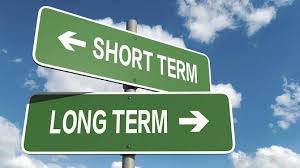How Much Do You Need To Retire In Relative Comfort?
Thoughts of retirement started flowing through the minds of most people the very day they got their first jobs. In most cases, your employer started thinking about it right there too. After all, no condition is permanent. Life is in phases; and the earlier you realize that, the better.
A lot of things are involved in retirement planning and chief among them is to answer the question “How Much Do I Need To Retire In Relative Comfort?.”
Many retirement experts and personal finance professionals believe you will need a post-retirement annual income very close to your pre-retirement annual income. This way, you will be able to have a quality of life similar to what you lived before retirement. These experts have recommended a retirement annual income that is worth 80% of your pre-retirement annual income. This way, it is assumed that you’ve dedicated about 20% of your income to savings and Investments.
Indeed, you’re the architect of your own life, and the decision about the amount to save for retirement is totally up to you. Also, a lot of factors come into play that essentially make this decision truly personal. The first of them is for you to define what you want your retirement to look like.
Define Your Retirement
A friend of mine, Fred, is a single father of two. He desires to fully venture into writing, his long time hobby, after his retirement. Another friend of mine, John, desires to travel the  world with his wife after retirement. John plans to spend his retirement in resorts and historical museums across the continent, with his darling wife, in order to make up for the time they lost while he was busy with several jobs and she was busy with the kids.
world with his wife after retirement. John plans to spend his retirement in resorts and historical museums across the continent, with his darling wife, in order to make up for the time they lost while he was busy with several jobs and she was busy with the kids.
You can see that Fred and John have totally different pictures of how retirement will be. While John will have to continually spend money on traveling expenses for two; Fred will have only his mouth to feed and he could even get some money if any of his works gets published. In the same vein, to achieve their retirement goals, they will have to approach retirement savings differently.
Your definition of retirement can change several times over the course of your career. If so, just make sure that you adapt whatever the new plan is to your current level of retirement planning.
No matter what your retirement means, you have to decide when to saving towards it and when you want to retire.
Retirement Planning and Retirement Age
Your retirement planning entails you determining how your retirement will look like, when you intend to retire, what your retirement income goals will be and how to achieve those goals. You can start planning for your retirement at any age. In fact, as I stated earlier, “the earlier, the better.”
When you intend to retire is another decision you will have to make in the earlier part of your plan. According to the US Census Bureau, the average retirement age in the United States is 63. Also, according to USA.gov., most people in the US live an average of 20 years after retirement. This means you can live up to 93 years if you retire at age 63.
The fact is, more people are living older today than yesterday, life expectancy keep increasing. We now have a lot of people living between 25 and 30 years after retirement, an important factor you have to consider in your retirement plans. Please, you don’t want to outlive your retirement savings. It’s better to leave something behind than to owe something behind.
Once you’ve decided on when to retire and the number of years you think you can spend in retirement, then you have to decide when to start saving for retirement. The best time is now! As with all types of savings, the earlier you start, the easier it becomes for you to achieve your goals.
To have an easy retirement savings experience, it is great to start saving immediately you start working; usually in your 20s. Nonetheless, there is no time you can’t start. Just know that the longer you delay this, the more aggressively you will have to commit to it later.
Calculating How Much You Need For Retirement
Remember, your retirement goal is to live a quality of life that is very similar to what you’re currently having in your per-retirement days. To know how much you need for retirement,  you have to know what your expenses will be during retirement.
you have to know what your expenses will be during retirement.
For instance, you hope to become a home owner before retirement. So no more mortgage payment and no more rent. Yet, you have to decide if you’re going to relocate to a cheaper environment (peradventure to reduce the financial heat of retirement). Also, no more school fees, your children are all independent now; no more debit card debt; and no more school loan debt.
However, you may start spending more on drugs and physically exerting home chores (like mowing the lawn and clearing the gutters). You may also have to factor-in the cost of your unending holiday plans.
When we compare how some of your current expenses will decrease during retirement and how some of them will increase, we can come to a reasonable conclusion that you will still spend as much as you’re spending now during your retirement. This still brings us back to the fact that you wish to maintain a constant quality of life.
Therefore, you can use a general rule of thumb to calculate what you will need for retirement. You can multiply 80% of your current annual income (that 80% is equal to your current annual spending) by 25 (to be on the safe side, we already said many people are now living 25-30 years after retirement). The answer to that simple mathematics will be what you need to save for retirement.
Note that we’re not assuming that you will always make the same income throughout your working career. There’s bound to be changes. You may get promoted and receive higher pay, you may change jobs and receive lower pay for some time. Everything that affects your current income will affect your retirement savings, but the key to a perfect plan is to make sure that the effects of such changes are not more than proportional to their causes.
After drawing a realistic picture of what your post-retirement expenses will look like, the next thing is to plan how you’re to finance it. The USA.gov. stated that, “the three most common options to save for retirement are: enrolling in retirement plans offered by employer (401K and IRA), savings and/or investment, and social security.” The best thing is to engage in a combination of the above options. In fact, I will recommend you undertake the three.
If you’re to achieve your retirement goals, the above three options must be giving you an annual income that is equivalent to 80% of your pre-retirement income after your retirement. So this is the time to plan how much you expect each option to contribute to the total.
Employer’s 401(k) and IRA
Tapping into your employer’s retirement savings scheme is one of the best investment decisions you can my. Traditional 401(k) and IRA (I mean SEP IRA or SIMPLE IRA) are both  retirement savings programs offered by most employers in the United States. People who are self-employed can also implement these schemes for themselves as well.
retirement savings programs offered by most employers in the United States. People who are self-employed can also implement these schemes for themselves as well.
The first advantage you get from these savings programs is that you don’t have to worry about remitting the money by yourself, your employers automatically deduct the percentage you’ve specified every month. What enters your account as salary is what remains after it has been deducted.
Moreover, many employers usually match a particular percentage of their employees’ investment. That is, if your employer promises to match 4%, it means when you invest 4% of your salary, what actually enters your investment account is an equivalent of 8%. Although there is always a limit to investment in these plans, those starting late (usually from age 50 and above) are allowed to add a certain catch up amount (up to $6,000 as at 2019) after the limit to meet their investment goals.
Another advantage is that you don’t pay taxes on every fraction of your salary invested in this manner, taxes are only paid when you start cashing out your money several years after it has yielded in many folds. People looking for ways to reduce their taxable incomes will like this.
Additionally, you’re able to invest your money in a host of mutual funds and exchange traded funds, in such a way that your investment portfolio suits your risk tolerance and reflects your choice.
You can start cashing out your money from your 401(k) and IRA accounts, and pay taxes on it at the normal rate, when you reach age 59.5. For any earlier withdrawal (called Hardship Withdrawal), you may have to pay 10% of what you want to withdraw as penalty, this is separate from the income tax you will pay on it. This is the reason you need a separate emergency savings scheme.
Savings and Investment
Apart from the investment opportunities available through your employers, you should engage in other personal savings and Investments. Apart from the need for emergency savings, you can also save this way towards your retirement. The earlier you know this truth, the better. Nevertheless, while it is good to keep your emergency savings in a savings account (where it can only yield very marginal interest or no interest at all), you want to save towards retirement in such a way that your savings will yield reasonable interests and for you to meet your investment goals.
With respect to the level of risk tolerance in investment, an individual between age 20 and 30 will always have more freedom than someone between age 30 and 40. The same way someone between age 30 and 40 will have more freedom than someone between age 40 and 50; and so on. When you’re young, you have so much time to recuperate from investment losses and even make a lot of money from compound interest in the long term; the reverse is the case when you’re closer to your retirement age. This is the reason you need to let your choice of investment reflect what you can afford to lose at every stage of your life.
When it comes to personal savings and Investments, Roth 401(k) and Roth IRA are very reasonable endeavors at any age. You can access so many investments (with various levels of risks) through them. Nonetheless, as noted before, the closer you are to retirement, the lower the risk you should take. The difference between them and Traditional 401(k) and Traditional IRAs offered by employers is that they are done with after-tax incomes and no taxes during withdrawals.
Social Security and Benefits
Retirement benefits from social security are based on your pre-retirement earnings. The amount you get as social security benefits depends on your age, the number of years you spent working, and the amount you made through those years. Albeit, you have to amass, at least, 40 social security credits (usually gotten through 10 years of work by most Americans) to qualify for social security benefits.
Recognized retirement age for all Americans fall between age 65 and 67 (depending on your year of birth), but you can request for social security benefits when you turn 62 (for early benefit). Early benefit, however, attracts penalty: the monthly amount you receive as benefit will be less than your deserved monthly benefit at full retirement (as if it has been spread to accommodate the extra years/months, but not really). The earlier you start collecting your monthly benefits prior to your full retirement age, the lower the benefit. The later you start collecting your monthly benefits after your full retirement age, the higher the benefit; until you reach age 70 when the increase stops.
Monitoring your social security status is very important for a successful retirement plan. For one, it let’s you make sure that you know when you’re to retire so as to be eligible for full monthly benefits. Two, you’re able to know how much to expect from social security benefits and you’re able to determine if it suits your retirement goals. And three, you’re able to make good use of Medicare services that you will be eligible for at age 65. Most importantly, social security benefits has been found to replace about 40% of an average retiree’s income after retirement (meaning what you need to achieve your 80% goal is just another 40%).
With the aforementioned secret about social security benefits, it may surprise you that about 50% of American workers are not on track to meet their retirement goals. This essentially points to the fact that you may need an extra dose of determination to meet your retirement goals. If you discover that you may not be able to handle your retirement planning, you can enlist the services of a financial planner.
Remember, there is no better time to start saving for your retirement than now. USA.gov. has made it known that “for every 10 years you delay starting to save for retirement, you need to save 3 times as much each month to catch up.”


